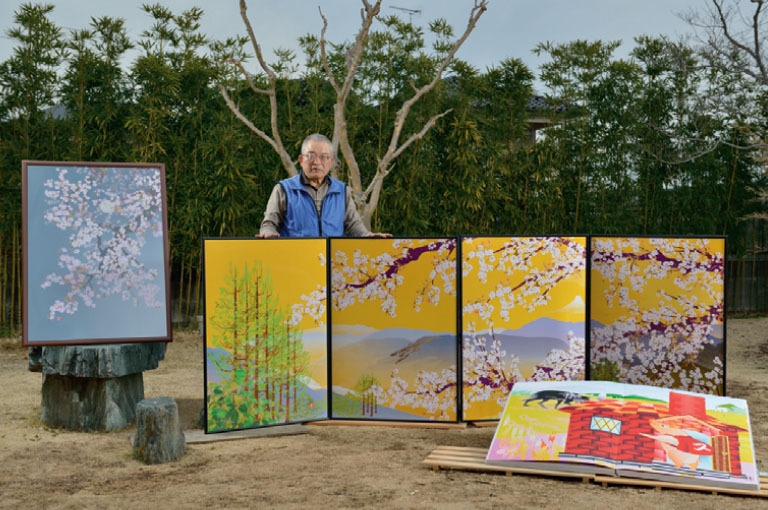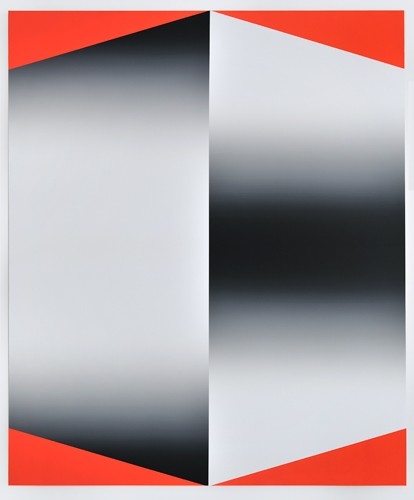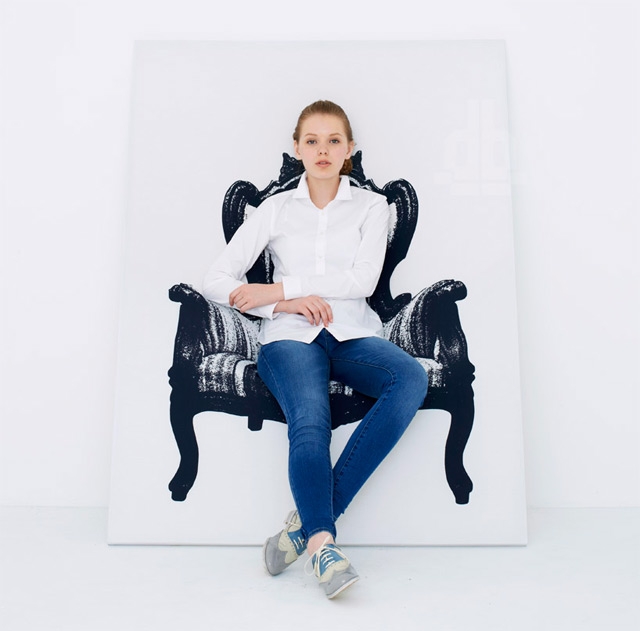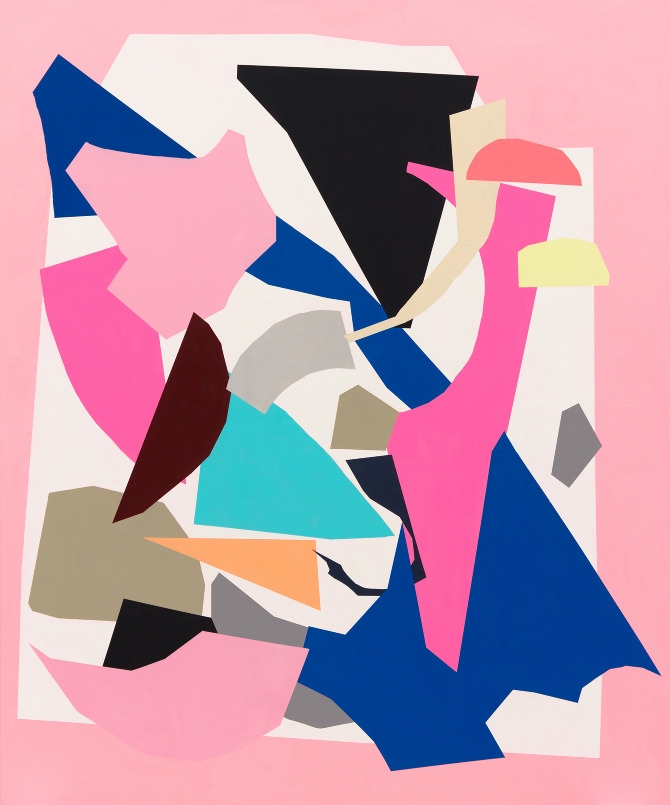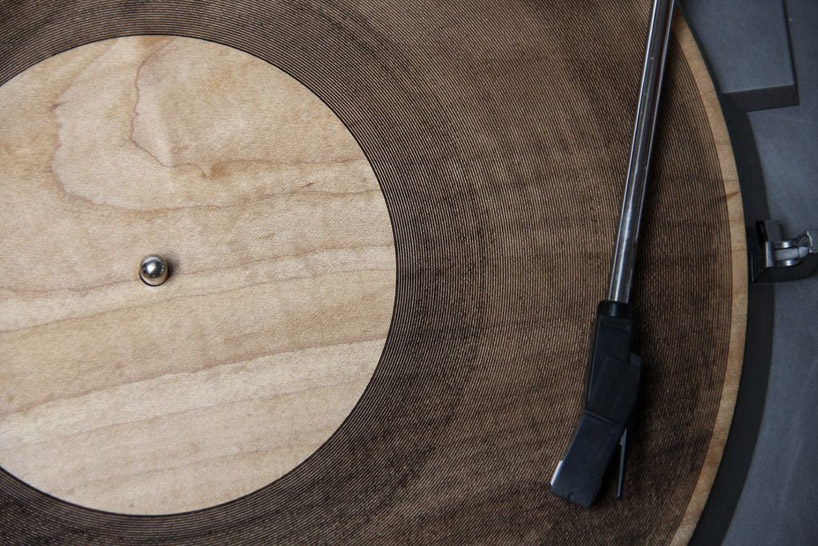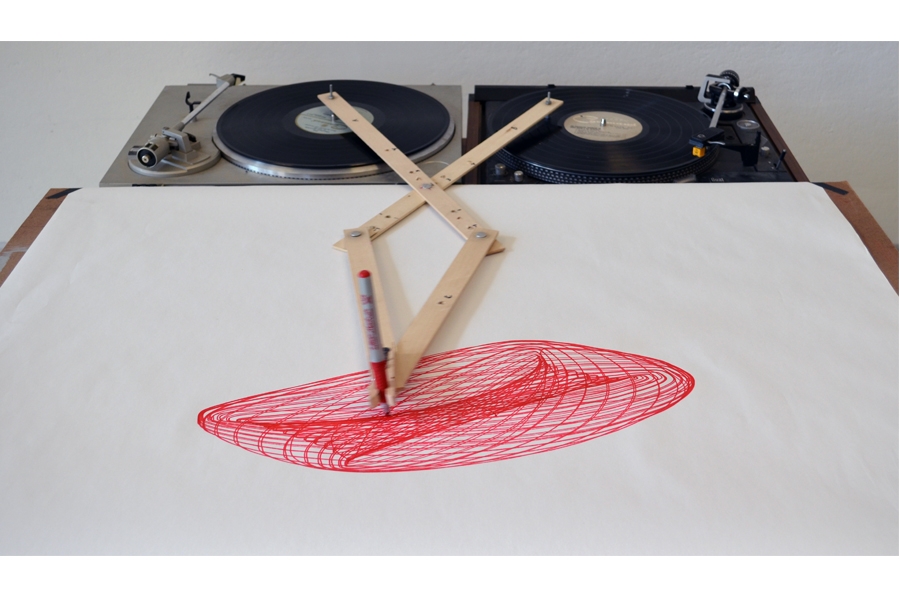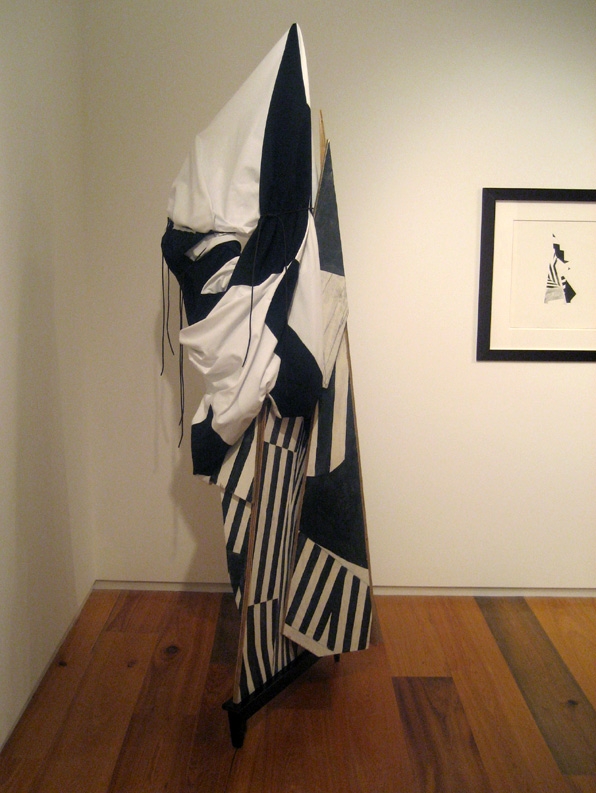Tatsuo Horiuchi didn't always use Microsoft Excel to make his artwork. He first gave Microsoft's Word and Paint programs a try, but oddly enough, he found Excel's spreadsheets to be the most flexible. The 73-year-old artist first used the software a decade ago after observing co-workers using the program to draw graphs, and stuck with it partially because of the high cost of programs meant for graphics.
Curious about your own Excel aesthetics? Download one of his works and give it a shot here. 

Images courtesy Suzanne Tarasieve Paris
Swiss artist Pierre Schwerzmann creates bold canvases that seem to contain a kinetic energy. Blocks of color sit next to black and white spaces that appear to throb and move. Some even seem set to hypnotize us—but the experience is too heady to label a trompe l'oeil.





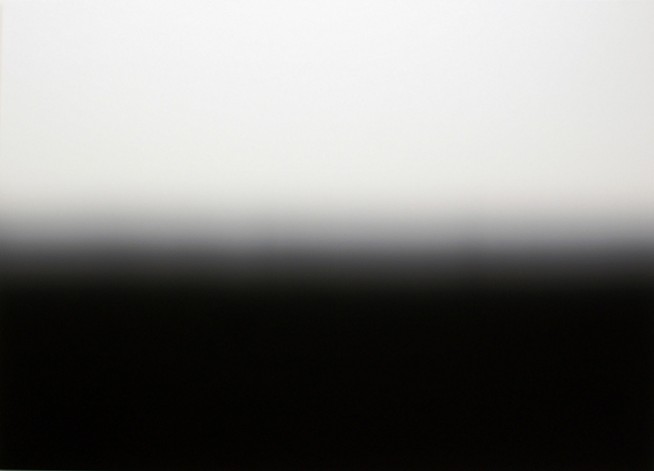
Today, Monday June 3, small tour groups will finally get a look at the three-year, $23 million renovation that brought Donald Judd's former SoHo residence back to the exact condition he left it in. His original collection of artwork, including pieces from Frank Stella and John Chamberlain has been returned to its original placement in the house, as has furniture from Gerrit Rietveld and pieces Judd designed himself.
Judd, who famously worked in the cosmically weird Marfa, TX, spent about 25 years in the five-floor house, which had a number of eccentric features. For instance, the kitchen has shelves only two inches tall to store silverware, and each floor is dedicated to a different activity, be it sleeping, eating, or working.
The building at 101 Spring Street, which had its neo-Grec exterior restored and 1,300 cast-iron elements recast, is now to be known as the Judd Foundation.
Reservations, including half-price admission for students, are available from the Judd Foundation. Read more about the restoration and museum in the New York Times.  101 Spring Street, New York, 5th Floor, 2013
101 Spring Street, New York, 5th Floor, 2013
Photo: Josh White. Donald Judd Art © Judd Foundation. Licensed by VAGA, New York Artwork ©John Chamberlain. © Lucas Samaras. Dan Flavin ©Stephen Flavin/Artists Rights Society (ARS), New York. Donald Judd Furniture™© Judd Foundation. 101 Spring Street, New York, 2nd Floor, 2013
101 Spring Street, New York, 2nd Floor, 2013
Photo: Josh White. Image ©Judd Foundation. Art ©Ad Reinhardt. Donald Judd Furniture™© Judd Foundation.
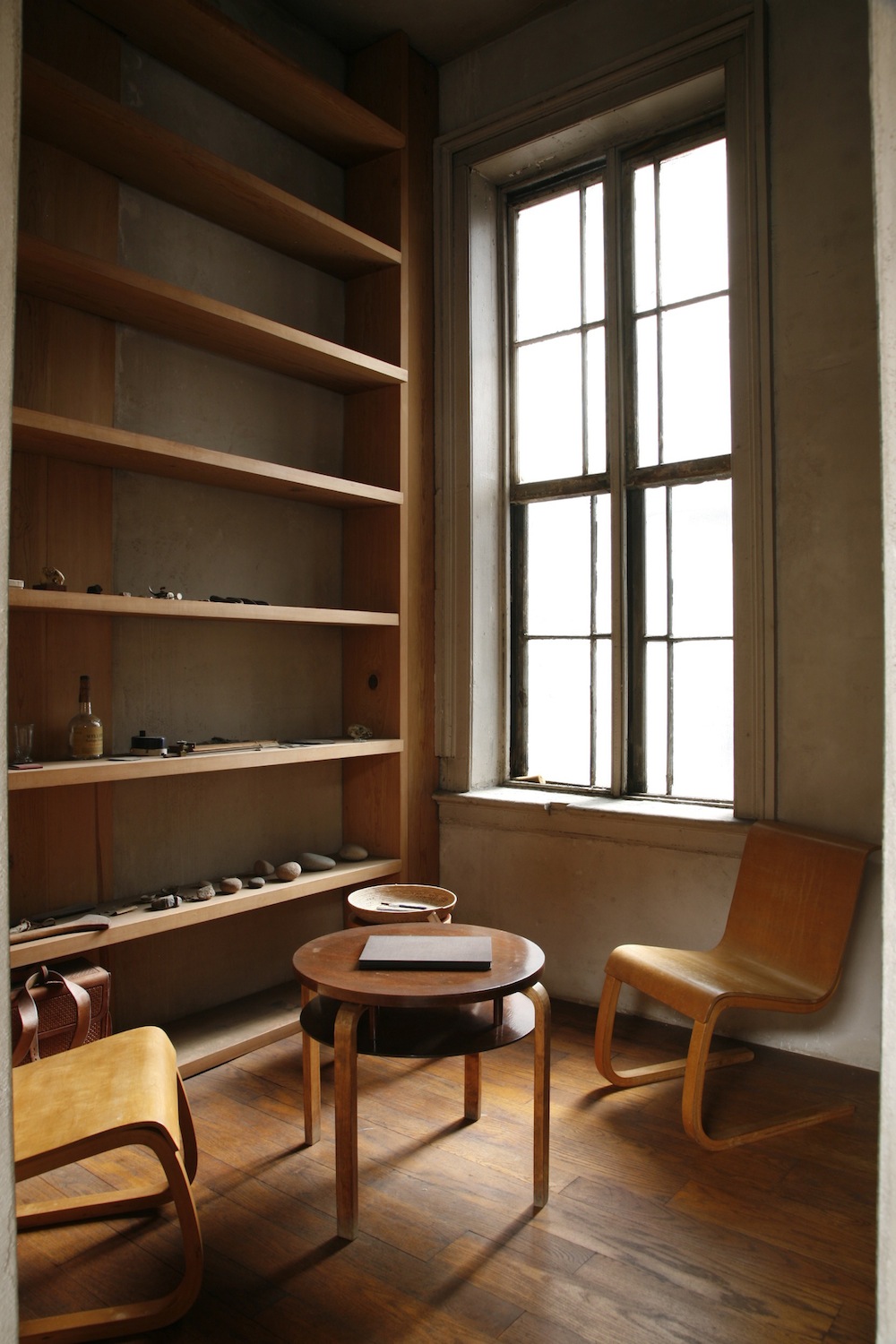
101 Spring Street, New York, 3rd Floor, 2010
Photot: Mauricio Alejo. Judd Foundation Archives. Image ©Judd Foundation.
For his latest installation, sound artist Zimoun worked with the idea of accumulation. He installed 329 tiny motors to agitate the same number of cotton balls against the interior walls of a massive abandoned paint thinner tank in Switzerland. The result is a sound sculpture that produces a drone that recalls a swarm of insects, some noisy wind, or the sounds of a distant basketball game. [via Colossal]
Check out some of Zimoun's past installations in his archives.



In order to give a name to the 55th installment of the Venice Biennale, director Massimiliano Gioni borrowed the title "The Encyclopedic Palace" (or "Il Palazzo Enciclopedico" in its original Italian) from the artist Marino Auriti. The title refers to Auriti's conceptual plan for a museum that housed the entirety of the human race's knowledge and inventions, and was chosen to describe the 55th Biennale's survey of the last 100 years of art, not simply a grouping of contemporary work.
The six-month event will show the work of 150 artists from 38 countries, including the first exhibition presented by the Vatican. Obviously, there's more to the vast Biennale than one can squeeze in a blog post, but these five shows have caught our eye and are worth checking out if you're headed to Venice.

Ragnar Kjartansson, "S.S. Hangover," 2013
Courtesy the artist; i8 Gallery, Reykjavik; Luhring Augustine, New York
1. Ragnar Kjartansson's "S.S. Hangover" at various locations
To make the most of Venice's canals, Icelandic artist Ragnar Kjartansson created a kinetic sculpture using a fishing boat built in 1934 in Reykjavik and six local brass musicians. The band will perform a site specific composition by Kjartan Sveinsson while continuously sailing in a semi-circle pattern meant to simulate stereoscopic sound. They'll also periodically drop off players at piers while the band continues to perform, highlighting different elements of the composition, while altering the piece being played on the boat.

2. Dayanita Singh at the German Pavilion
Dayanita Singh, who has photographed scenes of life in India for decades, will show photos from her 2001 work Mona, which examines the culture of eunuchs in India. The project, which began as a commission for the Financial Times to accompany a story about eunuch culture in 1989, was scrapped after Mona, the subject of the photos, demanded the negatives be returned to her. After realizing the feature was for a British newspaper and not an American one, she feared relatives who did not know she had become a eunuch would find out. Despite having to cancel the original assignment, Singh befriended Mona and photographed her over a decade later for her book Myself Mona Ahmed.

3. Richard Mosse at the Irish Pavilion
Using a custom-built large format camera and infrared film originally developed to detect camouflaged enemies during combat, photographer Richard Mosse documented conflict in the Democratic Republic of Congo with his surreal photos of pink rolling hills, red trees, and illuminated water. His installation, "The Enclave," is a multimedia work shot in 2012 with the goal of rethinking war photography. During the Biennale, the work will be released as a 240-page monograph from the Aperture Foundation.
4. Joana Vasconcelos at the Pavilion of Portugal
This year the Pavilion of Portugal will actually be housed in a traditional Portuguese ferry boat covered in Portuguese tiles called azulejos. The ferry boat, called Trafaria Praia, is both a reference to Venice's canals, as well as the national "seafaring" identity of Portugal. Trafaria Praia will house work from Joana Vasconcelos, and take periodic 30-minute voyages between two ports in Venice.

5. Koki Tanaka at Japan's Pavilion
For his showing at this year's Biennale, Japanese video artist Koki Tanaka tried to answer the question, "What message should Japan be sending to the world after the March 11, 2011 earthquake and tsunami?" In order to share the experiences of those who survived the earthquake with attendees who were more removed from the tragedy, Tanaka's video installation will assign visitors tasks designed to put them in unfamiliar positions, meant to represent the challenges of responding to a disaster.
Visit the Biennale online for more information.
YOY, the Tokyo based design firm, unveiled its latest creation at the 2013 Milan Design Festival: canvas furniture. Not to be confused with furniture that is simply just made out of canvas, this furniture is actually a piece of canvas art that can be hung. Made from a frame of wood and aluminum with an elastic fabric stretched across it, each of the pieces appear to be two-dimensional from a distance. Come closer and you’ll discover that the chairs are actually functional, somewhat three-dimensional objects that can be sat on—although we wouldn't quite describe them as furniture.



Kirra Jamison's modern paintings might seem a bit random, like cast-offs from a Matisse cut-out broken up, but they're actually created through a more intricate, inspired process. Jamison began with scraps of vinyl on the floor of her studio, arranged them into abstract collages and then screenprinted over them for the series "Total Control." For "Locomotor," she took the smaller prints and recreated them in acrylic. The effect is strangely pleasing to the eye even if it isn't even obvious that her creations are drawing from the material world.
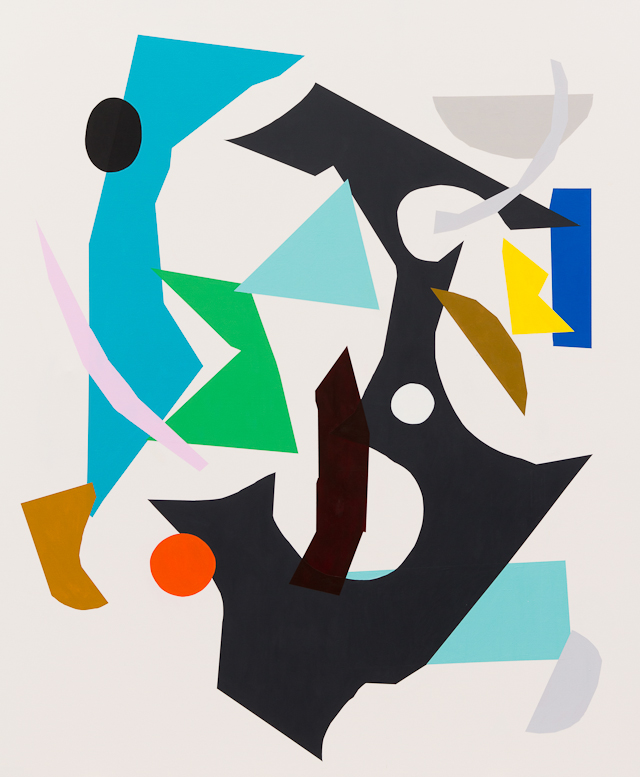
"Tenon Cargo"
"Mortise"
"Hum 2012" "Arch" from "Total Control"
"Arch" from "Total Control"
In 2012, Amanda Ghassaei used 3D printing to make her own, playable records from mp3 files. For 2013, she's dug into laser etching technology and used it to create functioning audio recordings (of Joy Division and Velvet Underground) in wood, acrylic, and even paper with a "theoretical precision of 1200dpi." Okay, so they don't sound so great—which perhaps says something for the technology used in making audiophile quality, conventional vinyl records—but she has shown etching "Femme Fatale" on maple can be done and perhaps refined.
You can read more about it on her Inscrutables page for the project which has instructions and code for making your own records.



The first few lines made by Robert Howsare's Drawing Apparatus don't look like much more than scribbles. But after only three more rotations, the marker lines start to take a more calculated form. After 30 seconds, the form suddenly takes on some dimensionality. The apparatus, built from two turntables, some thin pieces of pine, and a marker is one of Howsare's experiments in using "nontraditional matrices and processes to explore the anomalies that occur within systems." It reminds some of us of the Spirograph toys we had as kids.
Robert Howsare holds graduate degrees in printmaking and lives and works in Kansas City. Prints made with the Drawing Apparatus are available for $160.


Miami-via-NYC group Lansing-Dreiden released a trio of well-regarded and influential long-players in the aughties, all refining an original blend of '80s synthpop and galactic space rock. But L-D isn't a typical band—in fact, it calls itself a "multimedia company" and has created visual art, graphic design, installations, and a free literary journal, Death Notice, all under the L-D name. Famously, Lansing-Dreiden featured a band in its video that was not Lansing-Dreiden. This year, the Mexican Summer label reissues three Lansing-Dreiden albums on vinyl, so we thought we'd check in with the directors of the multimedia company and see if we could find out more.

"iii"
What was Lansing-Dreiden all about? It was a "collective" and also made up of visual artists, right?
We refer to Lansing-Dreiden as a company instead of a collective. Collective implies a group of artists working together on a single project whereas a company has a mission and aesthetic that must be maintained regardless of who the members are. Some members were visual artists and some were musicians, some both, but the company was set up in a way where everyone could take part in all of the decisions since they were ultimately meant to reflect the company itself and not any individual.

"SmallM4"
And then it became more about art than music? What kind of art?
It has never been an either/or situation. The entire body of work we make all comes from the same place. Our favorite medium has been misinformation.
What's the connection with Violens?
Apparently one of Lansing-Dreiden's members is part of a guitar pop group named Violens. We have never listened to it.

Why are the L-D albums being reissued? I always thought they should have gotten a bit more attention.
We appreciate that. They are being reissued because the label asked us if we wanted to have the records printed on vinyl, and we did. Over the years, the number of people we've met that found the work interesting in some way have far outnumbered the ones that have initially dismissed it. These re-releases are for them.

Can you tell us about the album packaging design?
It is pretty minimal, just black and white. A double-matte coat with silver foil stamp logo and song names on the back. Three releases are being reissued on 12". Each record cover is a more minimal spin on its original packaging.

L-D has been fairly media shy, but Violens has done interviews. Is that about creating a mystique or just more about time management?
Lansing-Dreiden has never really been media shy, we answer most questions. The press have accused us of using our anonymity as a gimmick—perhaps that's laziness on their part? The point of Lansing-Dreiden was to produce works in various mediums that were thematically and aesthetically in harmony, following a set of rules. We chose anonymity because we wanted the audience to relate to the work on its own terms, without needing to have a media personality to refer to.
For more Lansing-Dreiden, visit lansing-dreiden.com
